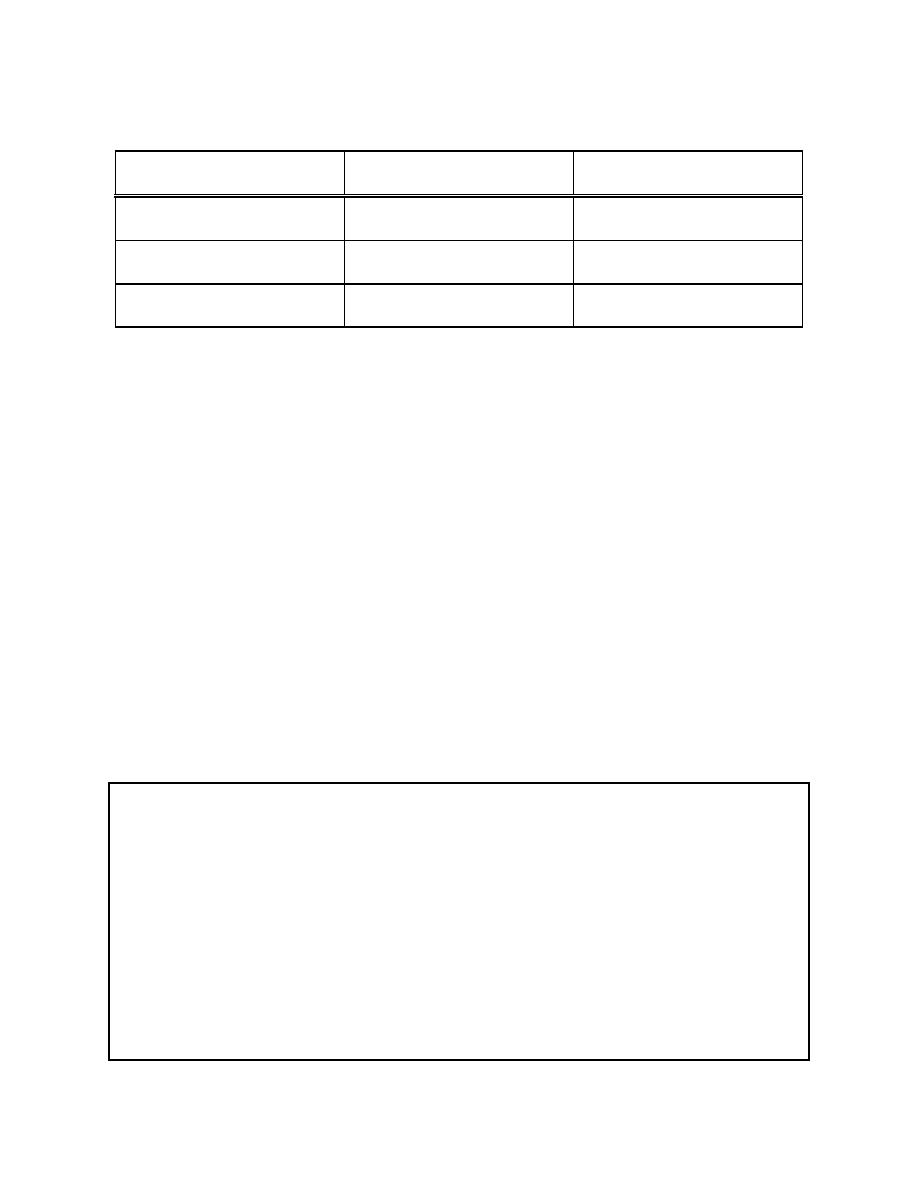
MIL-HDBK-1025/10
Table 22
Maximum Fault Current Capability for Grounding Cables1
Cable size
Fault time
Root-mean-square amperes
(AWG)
(cycles)
(copper)
15
27,000
2/0
30
20,000
15
36,000
3/0
30
25,000
15
43,000
4/0
30
30,000
1
These current values are the "withstand rating" currents for grounding cables and cables as
per ASTM F 855. These values are about 70 percent of the fusing (melting) currents for
new copper conductors. They represent a current that a cable should be capable of
conducting without being damaged sufficiently to prevent reuse.
5.3.4.3 Grounding Ferrules. Use ASTM F 855, Type IV (threaded stud copper
base compression type) when installed on grounding cables by facility personnel. Ferrules
should have the filler compound vent hole at the bottom of the cable so that workers can
visually check that the cable is fully inserted into the ferrule. Heat shrink or springs should
be installed over a portion of the ferrule to minimize strand breakage caused by bending.
In all cases, the manufacturer's recommendations should be followed. Do not use
aluminum alloy ferrules as they will not provide a lasting snug fit. Check for tightness
periodically.
5.3.4.4 Grounding Cluster Bars. Use to connect phase and neutral conductor
jumper cables to the selected method of providing a ground electrode (pole ground wire,
temporary ground rods, substation ground grid). Cluster bars should have an attached
bonding lead. Provide temporary ground rods as given in Table 23.
Table 23
Temporary Ground Rod Minimum Requirements
I.
Single rod installed to a depth of 1.5 meters (5 feet) below grade.
A. A minimum 16-millimeter (5/8-inch) diameter bronze, copper, or copper-weld rod at
least 1.8 meters (6 feet) long.
B. A 1.8-meter (6-foot) long, screw-type ground rod, consisting of a minimum 16-
millimeter (5/8-inch) diameter copper-weld shaft with a bronze auger bit and bronze
T-handle, tightly connected to the rod.
II. Additional rods to provide additional 1.5 meters (5 feet) lengths below grade where
required.
A. Install 1.8 to 2.4 meters (6 to 8 feet) apart while maintaining the 3-meter (10-foot) step
and touch potential clearance.
B. Bond all rods together prior to installing other electrode connections.
35



 Previous Page
Previous Page
